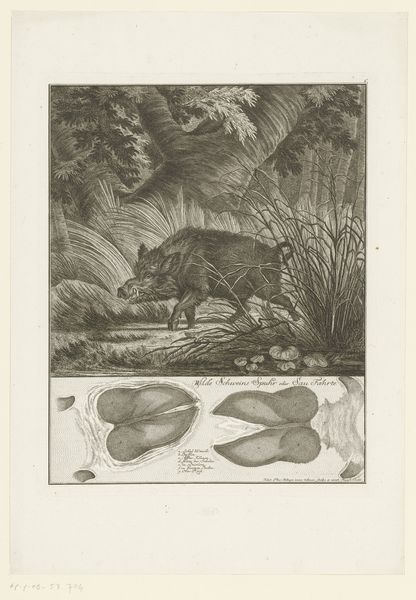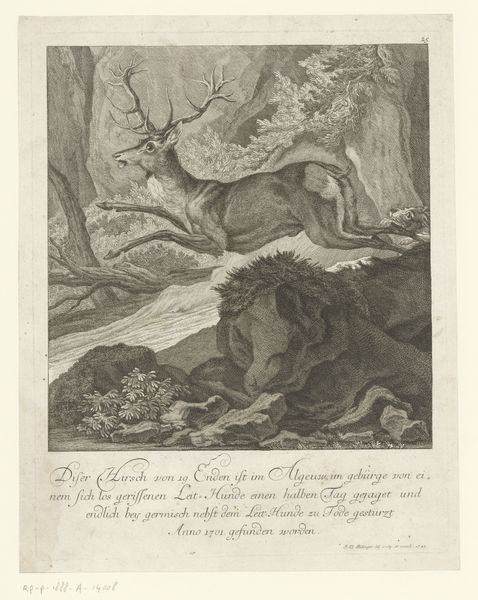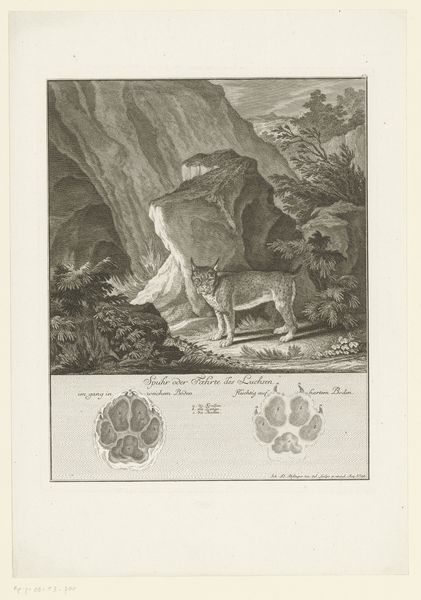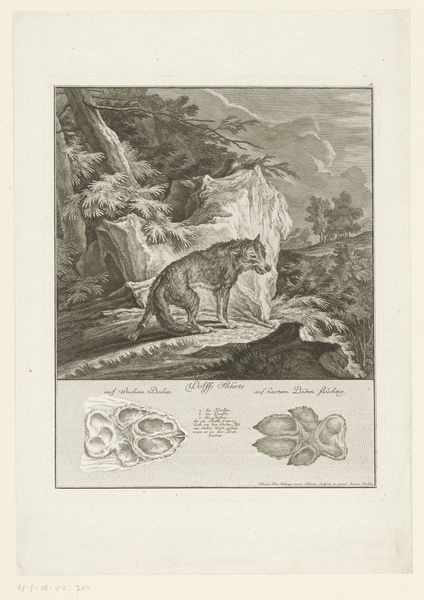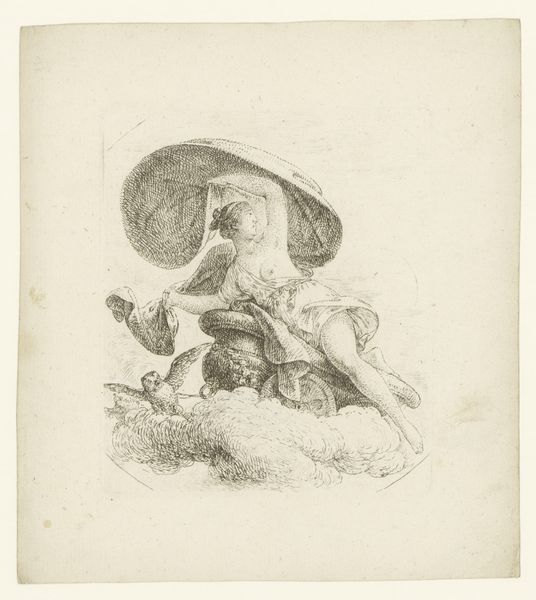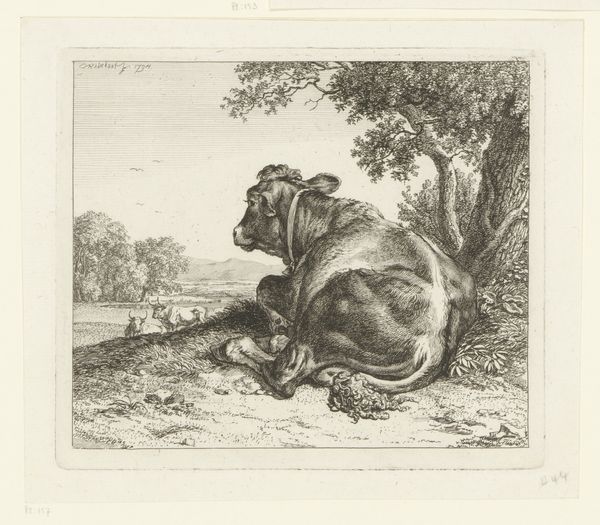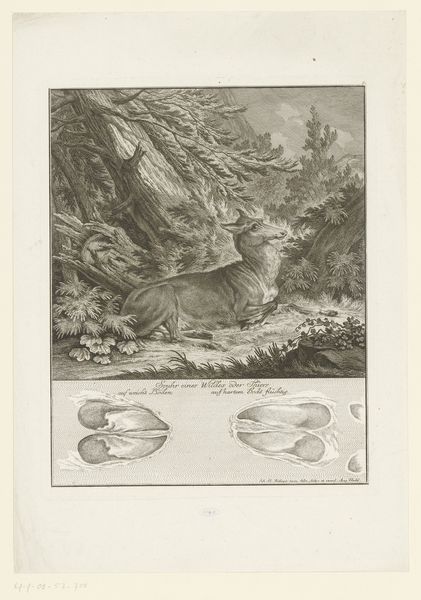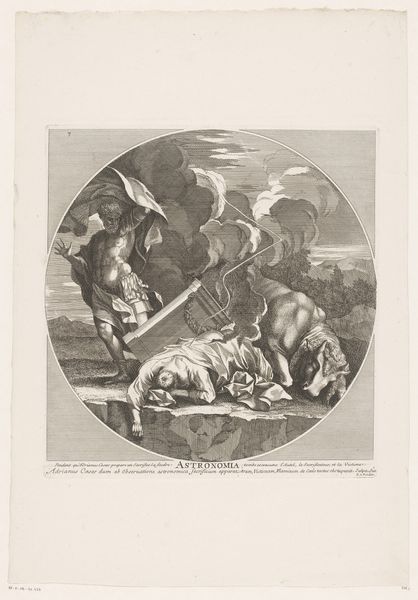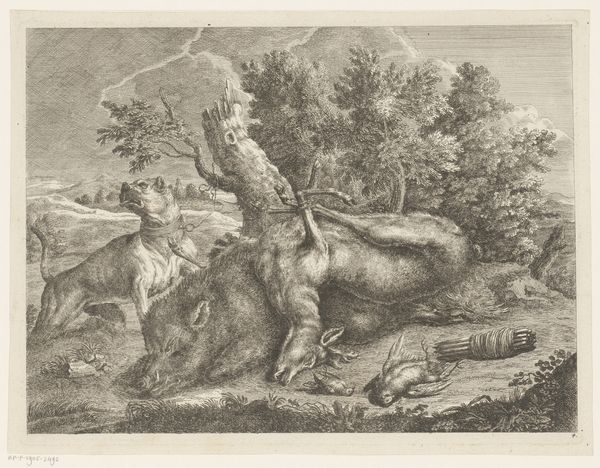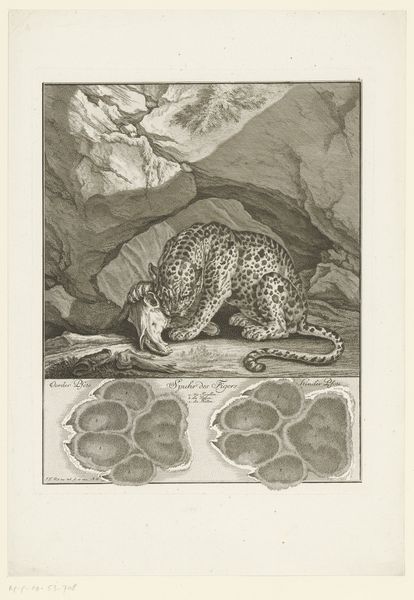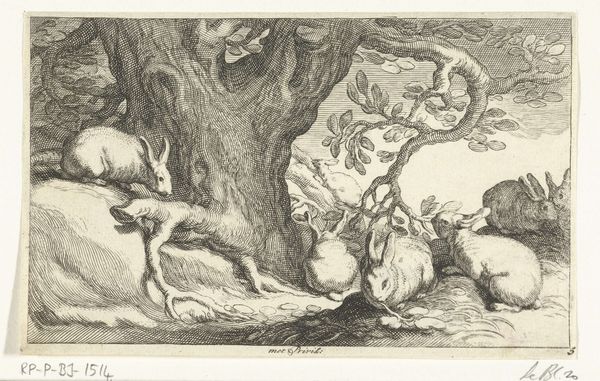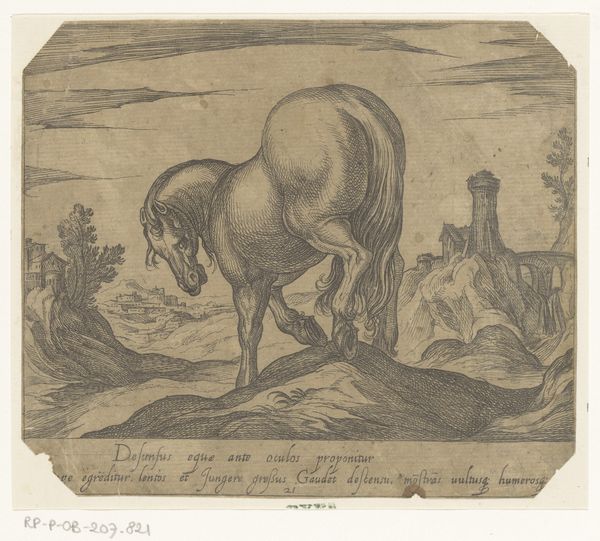
engraving
#
portrait
#
baroque
#
animal
#
old engraving style
#
landscape
#
figuration
#
forest
#
line
#
history-painting
#
engraving
#
realism
Dimensions: height 379 mm, width 304 mm
Copyright: Rijks Museum: Open Domain
Editor: This engraving, “Leeuw met spoor” from 1751, by Johann Elias Ridinger, is pretty striking. The lion looks so regal, but almost… manufactured? With those paw-print diagrams, it reminds me of something between scientific illustration and portraiture. What strikes you about it? Curator: The piece highlights the artist's process of understanding and presenting the lion, doesn’t it? This is Ridinger showcasing not just the animal, but his mastery of the engraving process, turning natural forms into crafted objects for consumption. Look closely at the lines – each carefully etched to mimic fur and muscle. Editor: So you’re saying it's less about the lion as a symbol and more about Ridinger’s labor in depicting it? Curator: Precisely. Consider the paper itself, the inks, the very act of printing. These were commodities, tied to economies of knowledge and trade. The prints made the lion reproducible, bringing images of exotic wildlife to a wider European audience, fueling both scientific inquiry and colonial fantasies. It becomes another raw material. What do you make of the landscapes being so minimal? Editor: Now that you point it out, that emphasis makes sense. The stark background almost looks like the diagram- the focus isn't the context or environment, but the act of crafting. Curator: Absolutely. It moves it into a conversation about labor, about how we consume imagery, and about the complex relationship between nature and its artistic reproduction in 18th century Europe. Editor: It really reframes the image! I was initially drawn to the seemingly realistic depiction, but it's interesting to see how materials and production methods speak just as loudly. Curator: Indeed, thinking about the work's material presence opens a window onto the socio-economic networks in which it circulated. Hopefully you will explore the complex relationship between material reality and artistic expression.
Comments
No comments
Be the first to comment and join the conversation on the ultimate creative platform.
